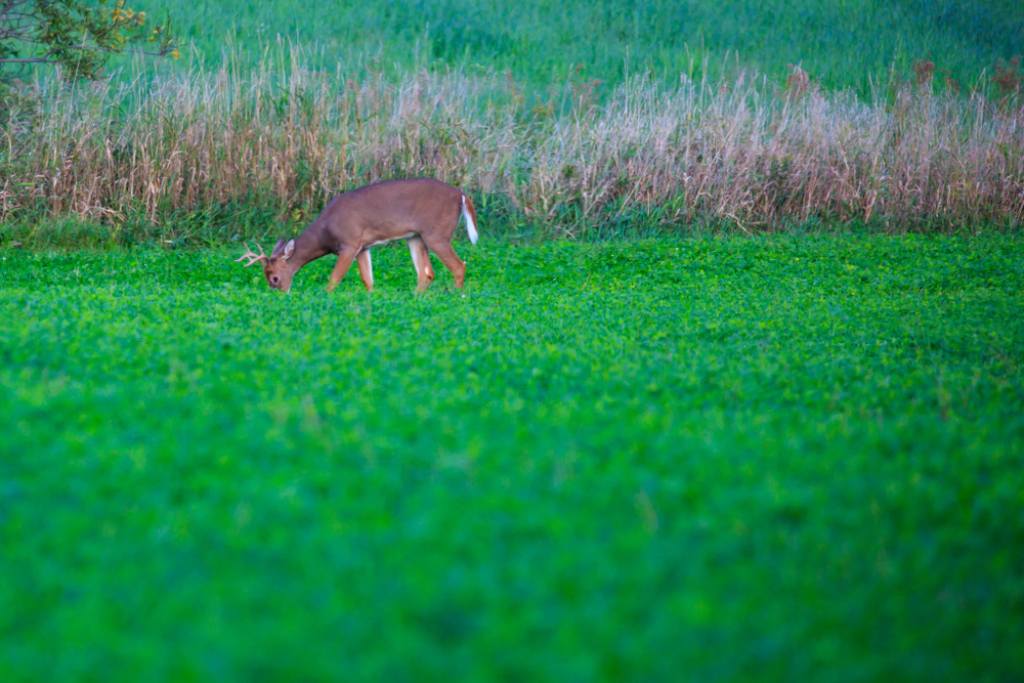Corn is commonly used as deer feed. But should it be?
Sure, it’s cheap, readily available, and tasty. But does it meet the nutritional needs of deer? Is it a food source that you can rely on to not only attract deer but also sustain them?
These are the questions we aim to answer in this blog post. So, let’s dive right into an exploration of what you can feed deer besides corn.
Why Corn Isn’t the Best Deer Feed
Corn tastes good to deer. But it is the equivalent of junk food to them, as the North Carolina Wildlife Resources Commission notes:
“As ruminants, deer maintain a specific blend of microbes in their gut that breaks down their naturally high-fiber diet. Large amounts of carbohydrate-rich, low-fiber foods like deer corn can disrupt this microbiome - leading to bouts of severe diarrhea and dehydration that can be deadly.”
As you can see, using corn to feed deer isn’t just the equivalent of giving them empty calories — doing so can cause far more serious issues such as starvation, which is an ethical issue in and of itself. Plus, a lack of healthy deer means you get left high and dry during hunting season. After all, if there are no healthy deer around, there are none to hunt.
What Do Deer Eat in the Wild?
Deer are herbivores, and they eat a wide variety of plant matter. Exactly what plant matter they eat depends heavily on the season and what is available. Generally speaking, though, deer eat three main categories of plant matter:
- Browse: Leafy parts of woody plants
- Forbs: Herbaceous broad-leaved plants
- Mast: The fruits and nuts of woody plants — can be soft (i.e. pears) or hard (i.e. acorns)
13 Things to Feed Deer Other Than Corn
In considering which of these options to use, it’s important to stay compliant with your state’s rules and regulations surrounding deer baiting and feeding.
It’s also important to consider the season when feeding deer, because they have different nutritional requirements during, for instance, the winter months, than the summer months.
That being said, here are 13 different natural deer feed options to consider feeding deer to both attract and sustain them.
High Protein Options
- Soybeans
- Clover
- Alfalfa
Fruits
- Apples
- Pears
- Persimmons
Vegetables
- Carrots
- Sweet Potatoes
- Beets
Seeds & Nuts
- Acorns
- Pecans
- Hickory Nuts
- Beech Nuts
Benefits & Drawbacks of Each Food Type
- High Protein: As J.R. Perkins notes in the piece “Supplemental Feeding” written for the Texas Parks and Wildlife Department Fisheries & Wildlife Division, high-protein foods are important for deer development…
- …In Perkins’ words, while “corn may be used as an energy supplement during very cold periods of the winter”, “a deer must obtain at least 6 to 7 percent crude protein diet just to maintain rumen function. A diet of less than 10 percent protein will result in inferior animals and poor antler development. Deer need a daily diet of 12 to 16 percent protein for optimum development of bone and muscle.”
- Fruits & Vegetables: Fruits and vegetables are a healthy supplemental feed option for deer. But in considering what to feed deer, aside from things like taste and nutritiousness, you also have to think about things like cost, longevity (i.e. will it last through hot or cold weather or spoil quickly?), and carrying capacity. Vegetables, and especially softer fruits are great attractants, but they are expensive and don’t last nearly as long as other foods like acorns or soybeans.
- Seeds & Nuts: Seeds and nuts can be a great supplemental food option. For instance, corn can be cut with soy for a higher protein content that better meets the nutritional needs of deer.
Attract Deer Easily With Tectonic’s Daytime Deadfall Feeder
Interested in attracting deer more easily during daylight hours when you can hunt? Learn more about our Daytime Deadfall Deer Feeder at Tectonic USA now.

